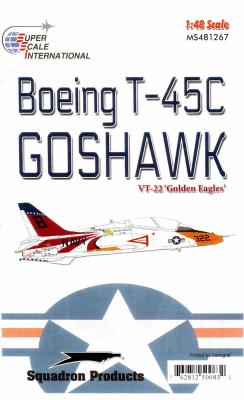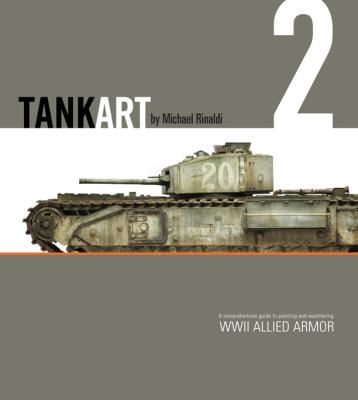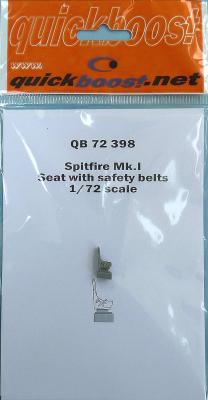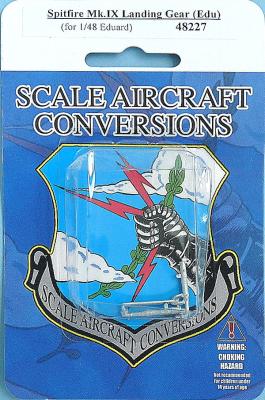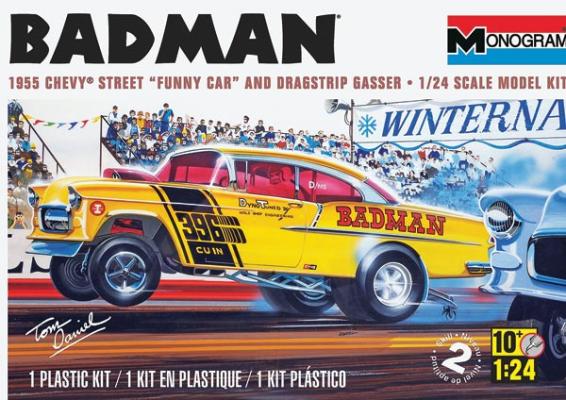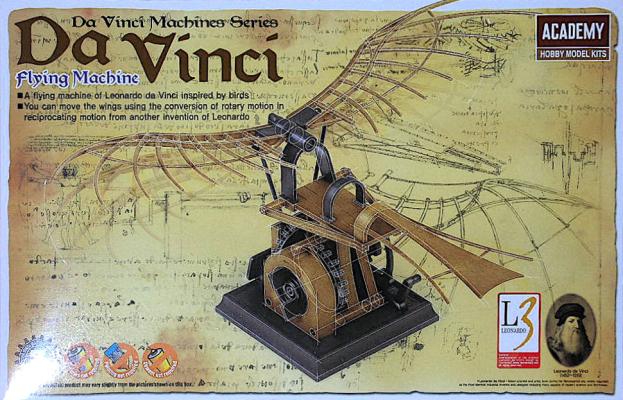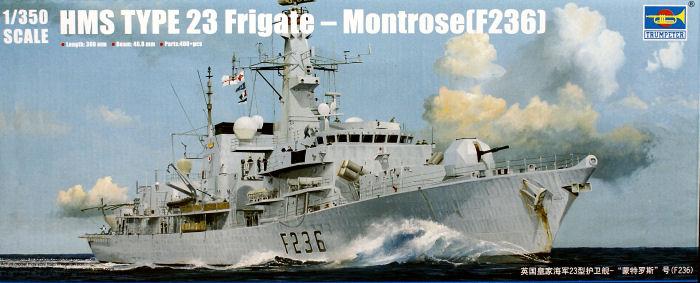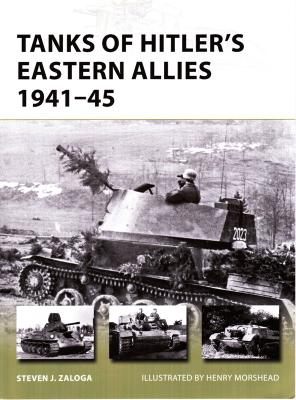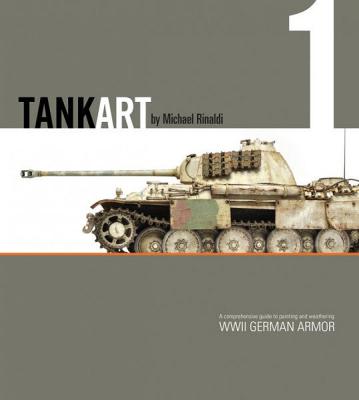On the heels of Kinetic's 1/48th release of the T-45 Goshawk comes Squadron Products Superscale Decal release of a full set of decals for the VT-22 "Golden Eagles." The scheme itself is excellent, with an eagle head flowing into red stripes decorating the back of the aircraft. There is one scheme on the sheet and it has excellent decals for the eagle, unit markings, and all the needed stencils. The decals are printed by Cartograf and are dense in color, thin in size, and perfectly in register. All national insignia and Navy markings are included.
Reviews
“How the heck did he do that?” A polite version of one of the most often-asked questions in the scale modeling culture. With the proliferation of modeling blogs and videos available on the internet, as well as generations of printed reference material, it seems a rare occurrence when a scale modeling reference in print form hits the market with such great impact and acclaim.
It’s déjà vu all over again – Michael Rinaldi’s TANKART Vol. 2 WWII Allied Armor is just such a work, following close on the heels of the amazing TANKART Vol. 1 WWII German Armor. Batting 2-for-2, the author seems to be on quite a roll, with TANKART Vol. 3 Modern Armor’s forthcoming release eagerly anticipated.
Motivation for Review
After taking a 1-year hiatus from modeling, I wanted to start back with a build that would be of strong interest for me. That is the Spitfire, and I decided to do 1/144, 1/72, and 1/48 builds in the Mk.IX series. For the 1/72 version, I choose the Airfix Supermarine Spitfire Mk.IXc. For me, one benefit of being in the IPMS Reviewer Corp is to request items in which I have a personal interest, and since I had acquired all of the prior mentioned scaled Mk.IXc model kits, I thought that the Reviewer List might be able to provide me with replacement detailed parts for my builds. I was right, and this review is for the second of the few parts that I have been able to obtain. I remain on the lookout for other parts. (Note: the 1/32 Spitfire scares me right now. But I am hoping that once I finish the 3 scales I have now, that I will be ready for it.)
Motivation for Review
After taking a 1-year hiatus from modeling, I wanted to start back with a build that would be of strong interest for me. That is the Spitfire, and I decided to do 1/144, 1/72, and 1/48 builds in the Mk.IX series. At this time, the excellently reviewed: 1/48 Eduard Spitfire Mk.IXc late version was released. For me, one benefit of being in the IPMS Reviewer Corp is to request items in which I have a personal interest, and since I had acquired all of the prior-mentioned scaled Mk.IXc model kits I thought that the Reviewer List might be able to provide me with replacement detailed parts for my builds. I was right, and this review is the first of the few parts that I have been able to obtain. I remain on the lookout for other parts. (Note: the 1/32 Spitfire scares me right now, but I am hoping that once I finish the 3 scales I have now that I will be ready for it.)
This 1/24th scale 1955 Chevrolet hardtop is another re-release of an older model designed by Tom Daniel for Monogram Models. As you may know, Tom Daniel designed 87 model cars for Monogram between 1967-1976. Most of his kits can be built in an evening or two, and this one is no exception. There are only 68 parts in this kit. It can be built straight from the box for an attractive model, or extra time can be spent in detailing the engine compartment if that is what floats your boat. The interior is decent with racing seats, a 2-piece roll bar, etc. However, once the red-tinted windows are in place, nothing of the interior can be seen, anyway. There is some compromising of detail – Monogram used the body and chassis from another release of the ’55 Chevy and, as a result, the molded exhaust pipes and muffler are still present on the chassis. This is in spite of the racer having header pipes attached that exit out the sides of the chassis.
The mind of Leonardo DaVinci must have been an interesting place. There's an entire museum in Milan full of his art work, architectural and biological drawings, and working models made from his original plans for a wide variety of machines, and Academy has released a series of spring-driven working models based on these. The subject of this review, his Flying Machine, contains a series of gears that drive two bird-like wings up and down. Of course, it doesn't actually fly, but it was an attempt to understand how birds do.
Background
The British Royal Navy has a long and proud tradition of Frigates in its history, dating back to the 1740’s. Smaller than a ship of the line, they were the workhorse of the British Royal Navy during the age of sail, combining a long range and the ability to operate independently, and performing a wide variety of missions more economically than the larger ships of the line.
In the modern British Royal Navy, the Frigate performs many of the same missions. Primarily designed as an anti-submarine warfare ship, they also perform convoy escort and independent patrols, hunting pirates and protecting sea lanes for merchantmen.
Much has been written in regard to the tank battles that happened on the eastern front with heavy emphasis on either the Germans or the Russians. This book looks into the smaller countries and the vehicles that were used during this campaign. By reading the book, you find out that some of these countries were not true allies to Germany. Many were forced to side with Germany and some tried to get out of this "alliance" but were drawn back in through kidnappings of their family members and other strong-arm tactics.
This book is clearly written and easy to follow. There are many black and white period photographs, color artwork, line drawings, cut-away drawings, and charts of the vehicles.
The Kit
This is Bronco Models’ version of the M1114 HMMWV. This version includes the XM153 CROWS mount.
Included in the top-opening box are:
“How the heck did he do that?” A polite version of one of the most often-asked questions in the scale modeling culture. With the proliferation of modeling blogs and videos available on the internet, as well as generations of printed reference material, it seems a rare occurrence when a scale modeling reference in print form hits the market with such great impact and acclaim.
Michael Rinaldi’s TANKART Vol. 1 WWII German Armor is just such a work. For that matter, the book seems to be a work of art in and of itself. Yeah, that sounds a bit extreme, but seeing, reading, and re-reading is truly believing. So much for cliché, let’s get into the facts.

